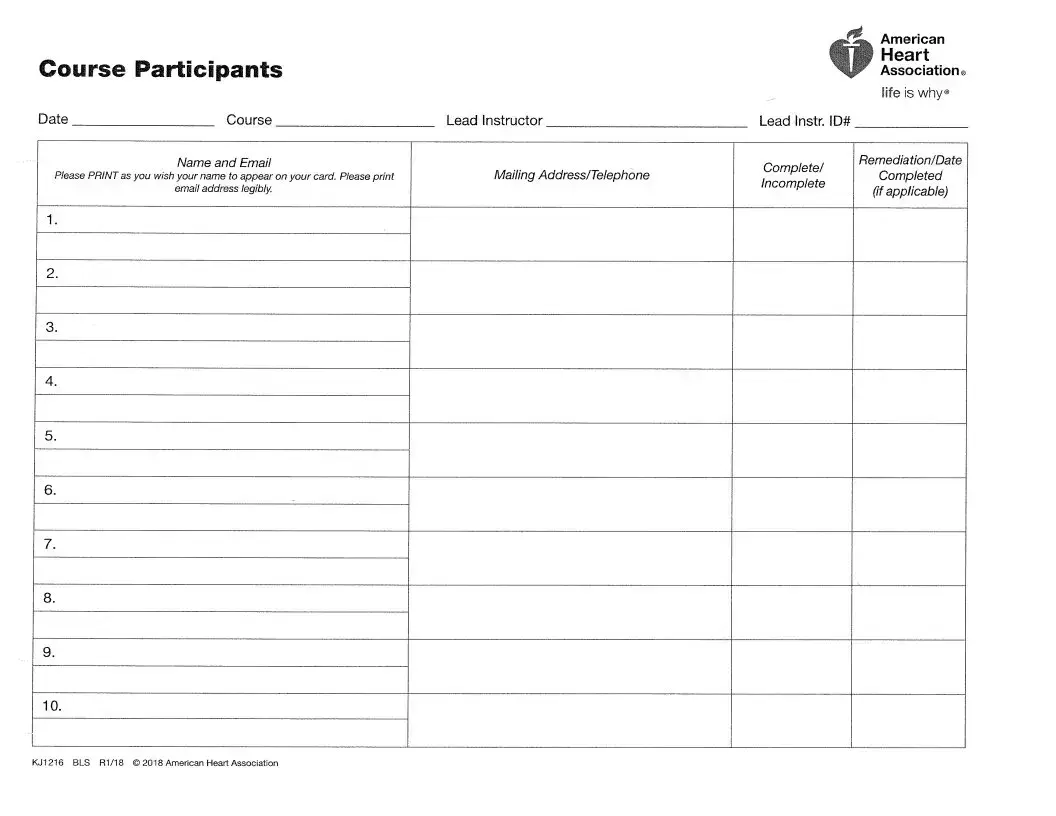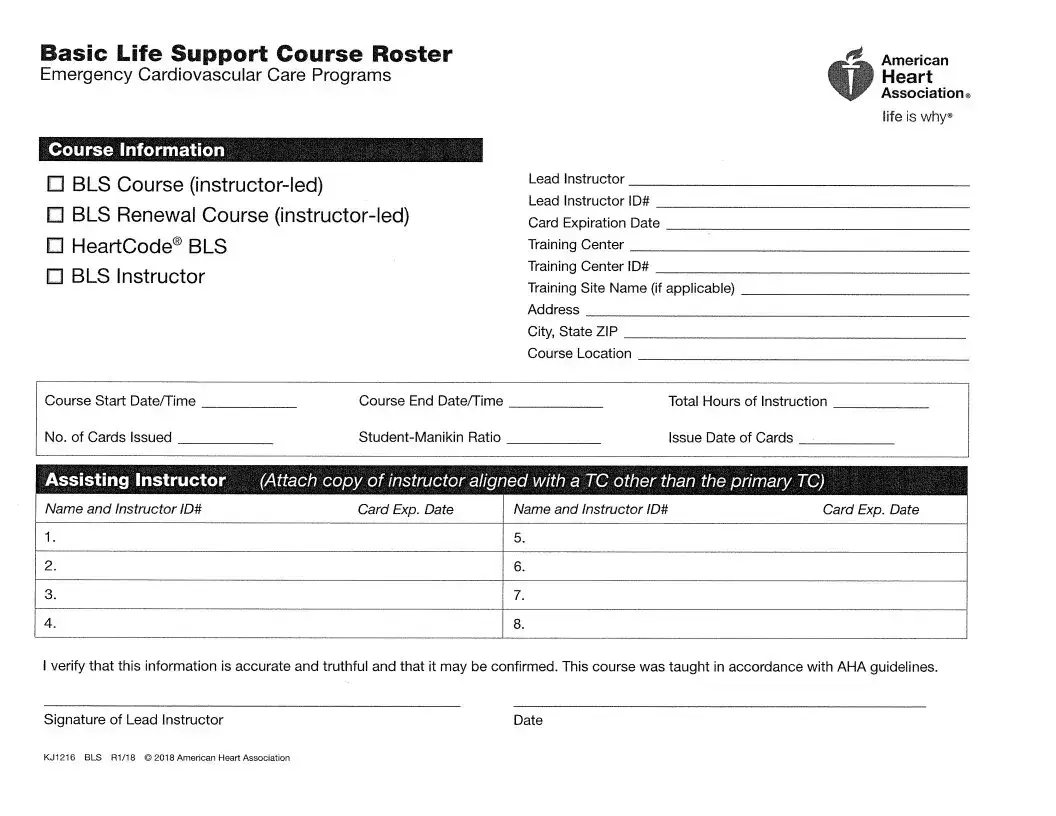What is the purpose of the Aha Roster form?
The Aha Roster form is a critical document used to record participants of Basic Life Support (BLS) courses and Emergency Cardiovascular Care Programs. It serves multiple purposes, including verifying attendance, maintaining accurate records for certification, and ensuring compliance with American Heart Association (AHA) guidelines. Each completed form helps instructors issue cards to participants who successfully complete the course.
What information is required when completing the Aha Roster form?
Completing the Aha Roster form requires several key pieces of information. You must include details about the course, such as the course type (e.g., BLS, BLS Renewal, or HeartCode® BLS), course start and end dates, and the total hours of instruction. Additionally, you need to provide information about the lead instructor, including their ID and signature, as well as details about the training center. Participants' names, email addresses, and mailing information must also be clearly printed. If there is an assisting instructor involved, their details should be attached as well.
How is the student-manikin ratio determined, and why is it important?
The student-manikin ratio is determined by the course requirements outlined by the AHA. It is essential because it ensures that each participant has enough hands-on practice to learn effectively. A proper ratio allows instructors to give adequate attention to each student, enhancing the learning experience. Maintaining the correct ratio is fundamental for meeting safety standards and improving the performance of course participants.
What should I do if I realize that the information provided on the roster is inaccurate?
If you discover that any information on the Aha Roster form is inaccurate after submission, it’s important to take prompt action. You should contact the lead instructor or the training center immediately to report the discrepancy. They can guide you on how to amend the records properly. Transparency is crucial as accurate information affects the certification process and the participants' ability to receive their cards.
How do I know if my course was taught according to AHA guidelines?


